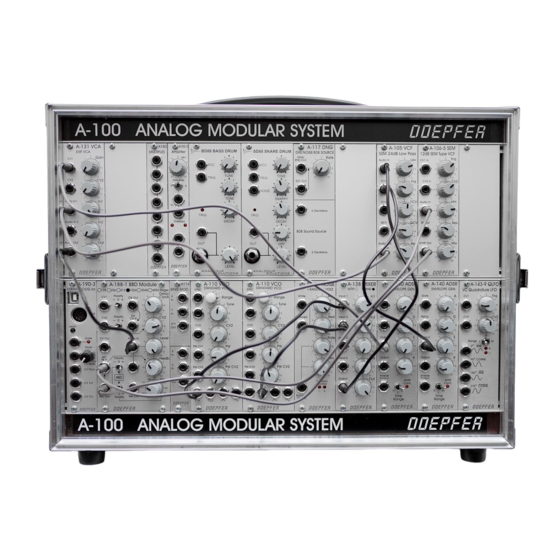DOEPFER
DOEPFER
DOEPFER
DOEPFER
2. Basic Principles
A BBD circuit can be regarded as a chain of Sample &
Hold units (S&H) which pass on their voltages to the next
S&H in the chain at each clock pulse. From this also the
name Bucket Brigade Device is derived as each stage of
the BBD can be treated as a bucket. At each clock pulse
the content of each bucket is forwarded to the next bucket
in the chain and the current bucket is filled with the
contents of the preceeding bucket.
Fig.2: Bucket Brigade
Remark: In reality two "buckets" are required for each
stage as the content of a bucket has to be stored
temporarily in a "slave bucket" before it can be filled with
the contents of the preceeding bucket, in contrast to a
"real" bucket brigade not the buckets are passed on but
only the contents.
In the BBD the water is replaced by analog voltages
which again represent audio signals. The first bucket (1)
is the audio input, the last bucket (n) is the output of the
BBD. As in reality there are losses while the water (resp.
System A-100
voltage) is passed on, because some drops of water go
wrong and at the end of the chain not the same amount of
water (resp. not exactly the same voltage) appears. In a
BBD the buckets are replaced by capacitors and analog
switches. As the capacitors of a BBD are very small
(some pF only) even the time required to pass on the
input to the output is crucial as the capacitors loose their
charges if it takes too long. This is why a minimum clock
frequency is specified for each BBC circuit. Below this
frequency the flawless operation of a BBD is not
guaranteed. In the A-188-2 intentionally frequencies can
be used that go below this value to obtain special "dirty"
and "crunchy" effects.
Standard BBD circuits as described above are available
(or rather have been available) with different numbers of
stages. Usual numbers are 128, 256, 512, 1024, 2048 or
4096 stages. In the A-188-2 a very special BBD circuit
with 3328 stages is used (MN3011) that is equipped with
additional outputs (taps) at the stages 396, 662, 1194,
1726 and 2790.
The number of stages defines the delay time that
corresponds to a certain clock frequency. The higher the
number of stages, the longer is the delay. The higher the
clock frequency, the shorter is the delay.
Example: At 100kHz clock frequency the delay time is
10.24 ms for a BBD with 1024 stages and 20.48 ms for a
BBD with 2048 stages.
BBD Module A-188-2
2

